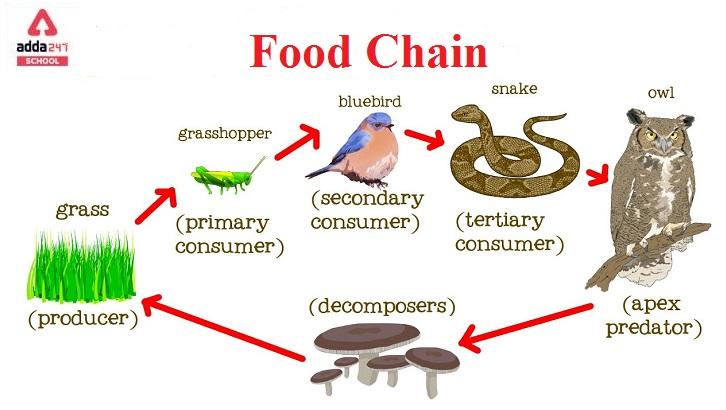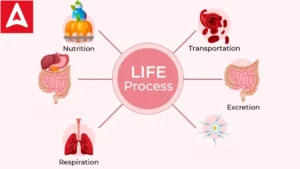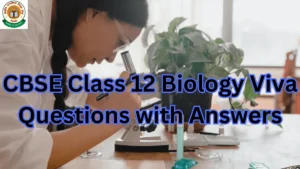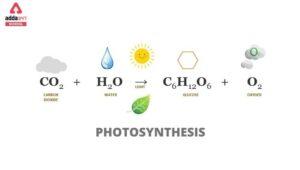Table of Contents
Food Chain Definition
Food Chain: Definition, Types, & Examples is discussed here in this article. A food chain in the ecosystem is the chain that explains which organisms eat what or what other living organisms. A trophic level in a food chain refers to the order in which producers, primary, secondary, and tertiary consumers appear in a food chain, starting at the bottom with producers and ending with primary, secondary, and tertiary consumers. It starts with the producer organism and finally ends with the decomposer organism.
A food chain is an example of how we, the living organisms are dependent on each other. The feeding pattern or relationship between living species is also explained by the food chain.
Food Chain Concept
The Whole concept of the Food Chain is present in our environment.
The Sun
The sun is the planet’s primary source of energy, providing energy to all living things.
Producers
All autotrophs, such as phytoplankton, cyanobacteria, algae, and green plants, are producers in a food chain. In a food chain, this is the first step. The first rung of a food chain is made up of producers. The sun’s energy is used by the producers to produce food. Producers, also known as autotrophs, are organisms that produce their own nourishment. Any plant or other organism that produces its own nutrients through photosynthesis is referred to as a producer. Green plants, phytoplankton, and algae, for example, are all examples of producers in a food chain.
Consumers
All species that rely on plants or other organisms for nourishment are considered consumers.
Because it encompasses practically all living species, this is the greatest part of a food web.
It contains herbivores, carnivores, parasites, and scavengers.
Decomposers
Decomposers are organisms that obtain energy from the decomposition of dead or discarded organic matter.
This is the final link in the food chain.
Decomposers are essential members of the food chain because they convert organic waste into inorganic materials such as nutrient-rich soil or land.
Food Chain Examples
A food web is a graphical representation of what consumes what in an ecological community, as well as the natural connectivity of food chains. The consumer-resource system is another term for the food web.
A food web is made up of several interrelated food chains. Moreover, a food web is far broader than a food chain. In a food web, a single organism is either consumed by a large number of predators or consumes multiple other organisms. Many trophic levels are intertwined as a result of this, thus forming a ‘web’.
The food chain, however, doesn’t do a good job of displaying energy flow. However, because it depicts interactions between diverse organisms, the food web is able to demonstrate an accurate representation of energy flow.
Food chains illustrate the flow of energy and nutrients from one organism to another within an ecosystem. Here are some examples of food chains in different types of ecosystems:
Terrestrial Food Chain:
- Grass → Grasshopper → Frog → Snake → Hawk
- Grass provides energy for the grasshopper.
- Grasshopper serves as food for the frog.
- Frog is eaten by the snake.
- Snake is consumed by the hawk.
Aquatic Food Chain:
- Phytoplankton → Zooplankton → Small Fish → Big Fish → Shark
- Phytoplankton are consumed by zooplankton.
- Zooplankton serve as food for small fish.
- Small fish are eaten by big fish.
- Big fish are consumed by sharks.
Desert Food Chain:
- Cactus → Desert Mouse → Snake → Hawk
- Cactus provides nourishment for the desert mouse.
- Desert mouse is consumed by the snake.
- Snake is eaten by the hawk.
Forest Food Chain:
- Acorns → Squirrel → Owl → Fox
- Acorns serve as food for squirrels.
- Squirrels are consumed by owls.
- Owls are eaten by foxes.
Urban Food Chain:
- Garbage → Rat → Cat → Coyote
- Garbage provides nourishment for rats.
- Rats are eaten by cats.
- Cats are consumed by coyotes.
Food Chain Types
The concept of a food chain describes the sequence of organisms that eat one another in an ecosystem. Each link in a food chain represents a different trophic level, from primary producers up to apex predators. There are several types of food chains in different ecosystems, and they can generally be classified into the following:
Grazing Food Chain
In this type of food chain, energy flows from plants (producers) to herbivores (primary consumers) and then to carnivores (secondary and tertiary consumers). This is the most commonly observed type of food chain and is prevalent in terrestrial ecosystems.
Example: Grass → Grasshopper → Frog → Snake → Hawk
Detritus Food Chain
This type of food chain starts with dead organic material or detritus. Detritivores or decomposers like bacteria and fungi break down the organic matter, which is then consumed by organisms higher up in the chain. This is common in aquatic ecosystems and some terrestrial ones.
Example: Fallen Leaves → Earthworm → Robin → Hawk
Parasitic Food Chain
In this food chain, smaller organisms feed on larger organisms without immediately killing them. This is most common in ecosystems where parasitic relationships are prevalent.
Example: Tree (Host) → Mistletoe (Parasite) → Mistletoe Seeds (consumed by birds) → Birds
Aquatic Food Chain
This type of food chain is specific to aquatic environments. Phytoplankton serve as the primary producers, which are consumed by zooplankton, small fish, larger fish, and so on.
Example: Phytoplankton → Zooplankton → Small Fish → Large Fish → Shark
Mixed Food Chain
This is a complex food chain that integrates elements from both grazing and detritus food chains. For example, in a pond ecosystem, both grazing and detritus food chains may exist, with some organisms participating in both.
Example: Algae → Fish → Heron and Dead Fish → Bacteria → Water Snails → Fish
Understanding these different types of food chains helps ecologists grasp the flow of energy and matter through ecosystems, allowing for better conservation and management strategies.



 Life Processes: Check Nutrition, Transpo...
Life Processes: Check Nutrition, Transpo...
 CBSE Class 12 Biology Viva Questions wit...
CBSE Class 12 Biology Viva Questions wit...
 Photosynthesis: Equation, Reaction, Diag...
Photosynthesis: Equation, Reaction, Diag...










